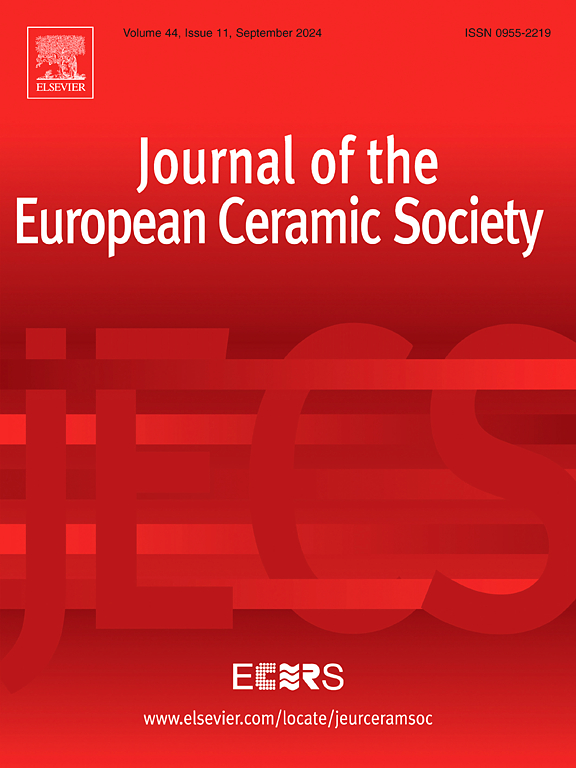Ordered distribution of bubble complexes induced by the planar defects
IF 5.8
2区 材料科学
Q1 MATERIALS SCIENCE, CERAMICS
Journal of The European Ceramic Society
Pub Date : 2025-05-27
DOI:10.1016/j.jeurceramsoc.2025.117564
引用次数: 0
Abstract
The interaction between He bubbles and planar defects can lead to an ordered distribution of bubbles that serve as a strong inhibitor of dislocations. Systematic research into this phenomenon is therefore essential to reduce irradiation hardening. However, the mechanisms behind the formation of this phenomenon are still unclear. In this work, using the in-situ 20 keV He+ irradiation method, bubble arrays in SiC were formed by the two-dimensional confinement effect of the planar defects. The subsequent irradiation process led to size growth and overlapping of the bubbles, resulting in a coral-like bubble structure that could be observed the [011] zone axis. For the first time, the observation of bubble bridges forming between the primary faulted planes with a larger average bubble size was reported. They formed by the preferential accumulation of vacancies at the junction of planar defects or the incoherent twin boundaries.
由平面缺陷引起的气泡配合物的有序分布
He气泡与平面缺陷之间的相互作用可以导致气泡的有序分布,作为位错的强抑制剂。因此,对这一现象进行系统研究对于减少辐照硬化至关重要。然而,这一现象形成背后的机制尚不清楚。本文采用原位20 keV He+辐照法,利用平面缺陷的二维约束效应在SiC中形成气泡阵列。随后的辐照过程导致气泡的尺寸增大和重叠,形成珊瑚状的气泡结构,可以在[011]带轴上观察到。首次观测到在主断层面之间形成气泡桥,平均气泡尺寸较大。它们是由平面缺陷交界处或非相干孪晶界空位的优先积累形成的。
本文章由计算机程序翻译,如有差异,请以英文原文为准。
求助全文
约1分钟内获得全文
求助全文
来源期刊

Journal of The European Ceramic Society
工程技术-材料科学:硅酸盐
CiteScore
10.70
自引率
12.30%
发文量
863
审稿时长
35 days
期刊介绍:
The Journal of the European Ceramic Society publishes the results of original research and reviews relating to ceramic materials. Papers of either an experimental or theoretical character will be welcomed on a fully international basis. The emphasis is on novel generic science concerning the relationships between processing, microstructure and properties of polycrystalline ceramics consolidated at high temperature. Papers may relate to any of the conventional categories of ceramic: structural, functional, traditional or composite. The central objective is to sustain a high standard of research quality by means of appropriate reviewing procedures.
 求助内容:
求助内容: 应助结果提醒方式:
应助结果提醒方式:


